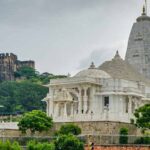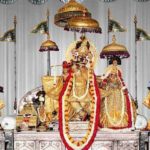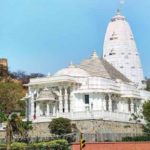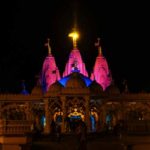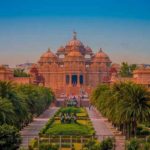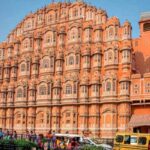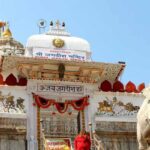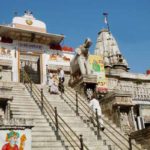Must Visit Temples in Jaipur, known as the Pink City, is home to several magnificent temples that reflect the city’s rich cultural heritage and religious diversity. Among the must-visit temples in Jaipur, the first is the Birla Mandir. Also known as the Laxmi Narayan Temple, it is dedicated to Lord Vishnu and Goddess Laxmi and boasts intricate marble carvings and stunning architecture.
Next is the Govind Dev Ji Temple located in the City Palace complex. This temple is dedicated to Lord Krishna and is particularly revered by devotees. Its architecture is a blend of Mughal and Rajput styles.
The Moti Dungri Ganesh Temple is another significant religious site in Jaipur. Perched on a small hill, it’s dedicated to Lord Ganesha and is especially popular among locals.
The Galtaji Temple is a complex of temples situated amidst the Aravalli Hills. Also known as the Monkey Temple, it’s dedicated to the Hindu monkey god, Hanuman. The natural springs and stunning surroundings add to its charm Jaipur Fairs Festivals.
Lastly, the Akshardham Temple is a recent addition to Jaipur’s religious landscape. Built-in pink sandstone and white marble, it’s a breathtaking example of modern temple architecture and a spiritual oasis in the city.
Each of these temples offers a unique spiritual experience and a glimpse into the rich religious tapestry of Jaipur Tour Packages.
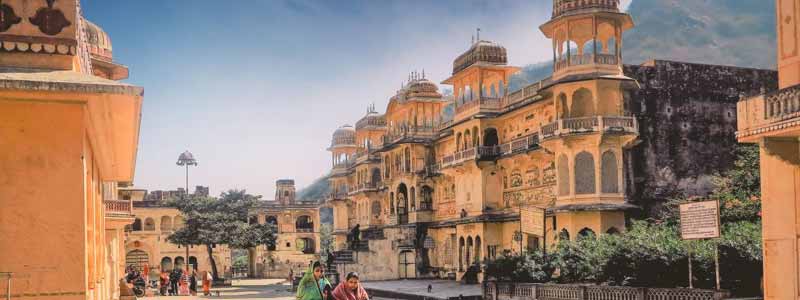
Galta Ji Temple, Jaipur
The Galta Ji Temple, often referred to as the Monkey Temple, is a significant Hindu pilgrimage site located amidst the picturesque Aravalli Hills, about 10 kilometers from the heart of Jaipur, Rajasthan, India. This temple complex holds immense religious and architectural importance, Jaipur Attractions.
The temple complex comprises a series of pavilions, holy kunds (natural water tanks), and several temples, all constructed from pink sandstone. The main temple, dedicated to the sun god, is known for its stunning architecture and intricate carvings. However, the most iconic feature of this temple is the natural springs that flow through the complex, filling the kunds with crystal-clear water.
One of the most striking aspects of the Galta Ji Temple is the presence of a large population of monkeys, which is why it earned the moniker “Monkey Temple.” These monkeys are considered sacred and are an integral part of the temple’s ecosystem. Visitors are often enchanted by the playful antics of these creatures.
The temple complex has several kunds, the most revered being the Galta Kund. It is believed that taking a dip in the holy waters of this Kund cleanses one’s sins and grants spiritual purification. Pilgrims from all over the country visit Galta Ji Temple, particularly during the festival of Makar Sankranti, to partake in this sacred ritual.
The serene and picturesque surroundings of the temple, nestled in the rugged hills, make it a tranquil and spiritually charged place. The panoramic view of the city of Jaipur from the temple complex is breathtaking, especially during sunrise and sunset.
Galta Ji Temple not only serves as a religious site but also as a testament to the architectural marvels of Rajasthan. Its historical significance, coupled with its natural beauty, makes it a must-visit destination for both devotees and tourists seeking a deeper understanding of the cultural heritage of Jaipur. This temple stands as a living testament to the enduring spiritual and architectural legacy of the region.
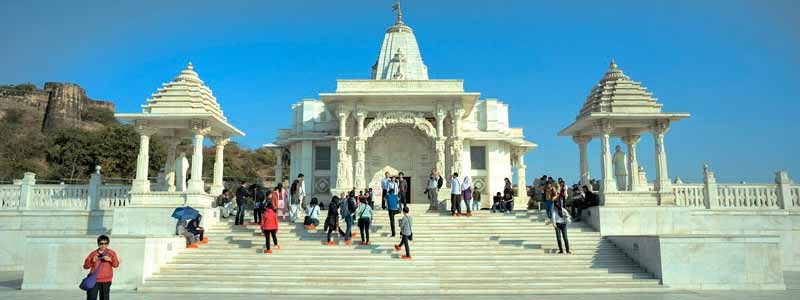
Birla Mandir, Jaipur
Birla Mandir, also known as the Laxmi Narayan Temple, is a prominent Hindu temple located in Jaipur, Rajasthan. It holds great cultural and architectural significance and is one of the most visited religious sites in the city.
Built in the 1980s by the renowned industrialist Birla family, the temple is dedicated to Lord Vishnu (Narayan) and Goddess Laxmi, the Hindu deities associated with wealth and prosperity. The temple is constructed entirely of white marble, which imparts it a pristine and ethereal appearance. Its intricate carvings and delicate detailing reflect the artistic mastery of the craftsmen, Jaipur Private Day Tours.
The temple complex is not only a place of worship but also a cultural center. It houses various idols and sculptures depicting different mythological scenes and characters from Hindu scriptures. The main sanctum sanctorum enshrines the idols of Lord Vishnu and Goddess Laxmi, adorned with elaborate jewelry and embellishments.
One of the most captivating features of Birla Mandir is its three enormous domes, each representing the three main deities of Hinduism: Brahma, Vishnu, and Mahesh (Shiva). The temple’s architecture is a blend of traditional Rajasthani and contemporary influences, giving it a unique and visually stunning appeal.
The temple is surrounded by lush gardens, enhancing its serene and tranquil ambiance. The beautifully landscaped surroundings provide a peaceful environment for devotees and visitors to contemplate and meditate.
Birla Mandir is not limited to religious ceremonies; it also hosts cultural events and festivals. The temple celebrates various Hindu festivals with great fervor, attracting devotees and tourists alike.
Moreover, the temple offers a panoramic view of the Jaipur cityscape, providing a wonderful vantage point to admire the Pink City’s architectural splendor.
Overall, Birla Mandir is not only a place of worship but also a testament to the architectural grandeur and cultural richness of Jaipur. Its serene ambiance, intricate craftsmanship, and spiritual significance make it a must-visit destination for both devotees and admirers of art and architecture.
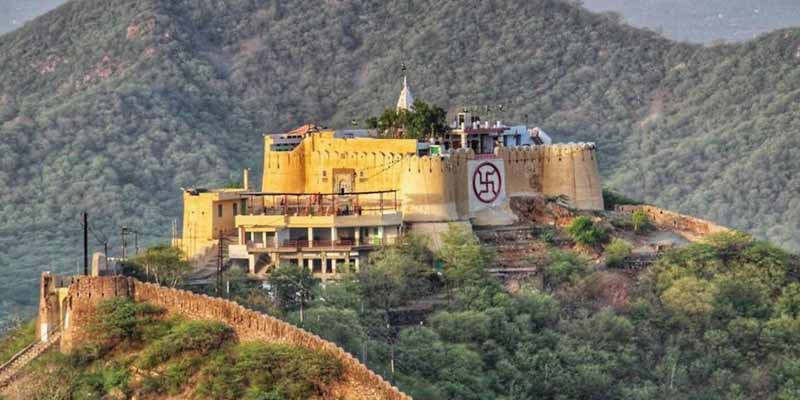
Garh Ganesh Temple, Jaipur
The Garh Ganesh Temple is a revered Hindu temple located in the Pink City of Jaipur, Rajasthan. Situated on the Aravalli Hills, this ancient temple holds immense significance for devotees, locals, and tourists alike.
Legend has it that the temple was constructed by Maharaja Sawai Jai Singh II, the founder of Jaipur, in the 18th century. The temple is dedicated to Lord Ganesha, the elephant-headed deity, who is widely revered as the remover of obstacles and the god of wisdom and intellect.
What sets Garh Ganesh Temple apart is its unique location. Perched on a hill, it offers a breathtaking panoramic view of Jaipur’s skyline, making it a popular destination for both spiritual seekers and nature enthusiasts. The climb to the temple is an integral part of the pilgrimage experience, as devotees ascend the stone steps amidst the serene surroundings of the Aravalli Hills.
The idol of Lord Ganesh enshrined in the temple is believed to be self-manifested, which means it appeared on its own without any human intervention. The idol is a small, 2-feet tall statue, carved out of a single block of stone. It is said that Maharaja Jai Singh II discovered this idol during the construction of the city and decided to install it in this temple.
Devotees flock to Garh Ganesh Temple, especially on Wednesdays, considered auspicious for Lord Ganesha. The temple resonates with the sound of bells and devotional hymns, creating a serene and spiritually charged atmosphere.
Apart from its religious significance, the temple also holds historical importance. It is believed that the view from Garh Ganesh was used by the rulers of Jaipur to strategize and plan their military campaigns.
In conclusion, the Garh Ganesh Temple in Jaipur is not only a place of religious devotion but also a site of natural beauty and historical significance. It provides visitors with a unique opportunity to connect with both divinity and the rich heritage of Jaipur. For those seeking a blend of spirituality, history, and natural splendor, a visit to Garh Ganesh Temple is a must during a trip to Jaipur.
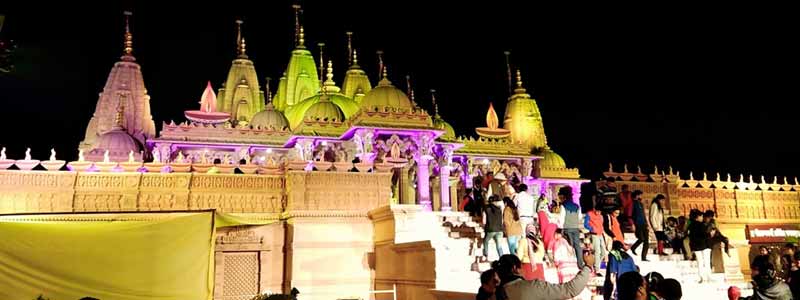
Akshardham Temple, Jaipur
Akshardham Temple in Jaipur is a marvel of modern temple architecture, reflecting the grandeur and spirituality of traditional Indian temples while incorporating contemporary design elements. Located in the Vaishali Nagar area, it is dedicated to Lord Narayana, an incarnation of Lord Vishnu.
The temple complex spans over a vast area and is constructed using pink sandstone and pristine white marble, blending seamlessly with Jaipur’s architectural aesthetic. Intricate carvings, sculptures, and ornate detailing adorn the temple, showcasing the exceptional craftsmanship of the artisans involved.
The central sanctum houses the stunning deity of Lord Narayana, intricately sculpted and exuding an aura of divine grace. Surrounding the main deity, the walls are adorned with scenes from Hindu mythology, depicting various episodes from the life of Lord Krishna and other deities.
One of the most captivating features of Akshardham Temple is its tranquil and meticulously landscaped garden. Lush greenery, vibrant flowers, and serene water features create a serene atmosphere, providing a peaceful retreat for visitors.
The temple complex also encompasses an exhibition hall that educates visitors about the rich cultural and spiritual heritage of India. Through multimedia presentations, it narrates the life and teachings of Bhagwan Swaminarayan, the founder of the Swaminarayan faith, to which the temple is affiliated.
Akshardham Temple is not only a place of worship but also a hub of cultural and educational activities. It hosts various events, spiritual discourses, and cultural performances, fostering a sense of community and promoting the values of spirituality and righteousness.
Visiting Akshardham Temple in Jaipur is not only a religious experience but also an architectural and cultural delight. It stands as a testament to the harmonious coexistence of tradition and modernity, making it a must-see attraction for both spiritual seekers and admirers of architectural splendor.
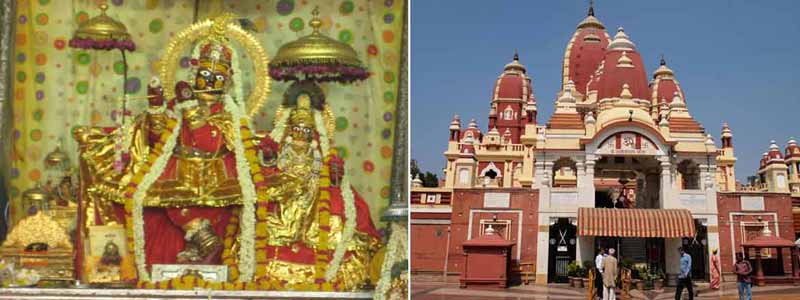
Govind Dev Ji Temple, Jaipur
The Govind Dev Ji Temple in Jaipur is a renowned Hindu temple dedicated to Lord Krishna. Situated within the City Palace complex, it holds immense religious and cultural significance for the people of Jaipur and devotees from around the world.
This temple’s history dates back to the 18th century when it was established by Maharaja Sawai Jai Singh II, the founder of Jaipur. The idol of Lord Krishna housed within the temple is believed to be a replica of the original deity from Vrindavan, which was brought to Jaipur to protect it from the Mughal ruler Aurangzeb’s anti-Hindu policies.
The temple’s architecture is a splendid blend of Mughal and Rajput styles. Its main hall, known as the ‘Gambhira’, is exquisitely adorned with beautiful paintings and intricate carvings. The sanctum sanctorum, where the idol of Govind Dev Ji is enshrined, is a place of deep devotion and spiritual solace for devotees.
One of the most significant aspects of the Govind Dev Ji Temple is its daily ‘Aarti‘ ceremonies. These are performed seven times a day, and they draw devotees in large numbers. The morning ‘Mangla Aarti’ and the evening ‘Shayan Aarti’ are particularly popular, offering a spiritually uplifting experience.
The temple also hosts various festivals with great fervor, most notably the celebration of Janmashtami, the birth anniversary of Lord Krishna. The entire city comes alive with processions, devotional music, and colorful decorations during this time.
The atmosphere around the Govind Dev Ji Temple is filled with a palpable sense of devotion and reverence. The melodies of devotional songs, the fragrance of incense, and the sight of ardent devotees engrossed in prayer create a deeply moving spiritual ambiance.
For visitors seeking a glimpse into the rich cultural and religious heritage of Jaipur, the Govind Dev Ji Temple stands as a testament to the enduring devotion of the people and the timeless allure of Lord Krishna’s divine presence.
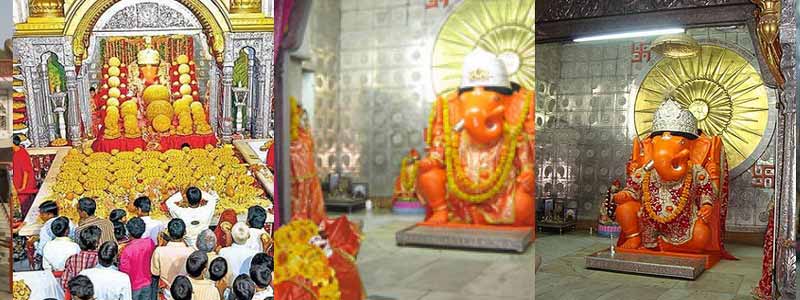
Moti Dungri Temple, Jaipur
Moti Dungri Temple, located in the heart of Jaipur, is a renowned Hindu temple dedicated to Lord Ganesha, the elephant-headed deity revered as the remover of obstacles. The name “Moti Dungri” translates to “Pearl Hill” in English, aptly named due to its location atop a small hill that resembles a pearl.
The temple is an architectural marvel, blending traditional Rajput and South Indian styles. Its distinctive orange and yellow facade, adorned with intricate carvings and artwork, captivates visitors with its grandeur. The central deity, Lord Ganesha, is enshrined within the sanctum sanctorum, beautifully adorned with flowers and offerings from devotees.
Legend has it that the idol of Lord Ganesha in Moti Dungri Temple is believed to be self-manifested, making it a particularly sacred place for devotees. It is said that the idol was found in a nearby pond by the then Maharaja of Jaipur, Sawai Man Singh I, who subsequently commissioned the construction of the temple.
The temple complex also houses shrines dedicated to Goddess Lakshmi and Lord Shiva, further enriching the spiritual experience for visitors. The serene ambiance and the rhythmic chanting of hymns create a tranquil atmosphere that fosters a sense of devotion and peace.
Moti Dungri Temple holds significant religious and cultural importance for the people of Jaipur. It is a focal point of various religious festivals, particularly during Ganesh Chaturthi, when the temple witnesses a surge of devotees who come to seek Lord Ganesha’s blessings.
Surrounded by lush gardens and offering panoramic views of the city, Moti Dungri Temple provides not only a religious experience but also a visual treat for those who visit. Its location in close proximity to other prominent attractions in Jaipur makes it a popular stop for tourists exploring the city’s rich heritage.
Overall, Moti Dungri Temple stands as a symbol of faith, devotion, and architectural brilliance, making it a must-visit for both spiritual seekers and admirers of cultural heritage in Jaipur.
Neelkanth Mahadev Mandir, Jaipur
The Neelkanth Mahadev Mandir is a revered Hindu temple located in the outskirts of Jaipur, Rajasthan. Situated amidst the lush greenery of the Aravalli Hills, this temple holds great religious significance for devotees and attracts tourists seeking a tranquil spiritual experience.
Dedicated to Lord Shiva, the temple is named after one of the many names of the deity, “Neelkanth,” which means “the one with a blue throat.” According to Hindu mythology, Lord Shiva consumed the poison that emerged during the churning of the ocean, which turned his throat blue. This event is commemorated in the temple’s name and is a central theme in its religious narratives.
The Neelkanth Mahadev Mandir is characterized by its serene and picturesque surroundings. Surrounded by dense forests and perched on a hilltop, it offers breathtaking panoramic views of the Aravalli range. The temple’s architecture is a blend of traditional Rajasthani and North Indian styles, featuring intricate carvings, vibrant paintings, and a white marble facade.
Devotees flock to this temple to seek the blessings of Lord Shiva, especially during the auspicious occasions of Maha Shivaratri and Sawan month, which are celebrated with great fervor. The temple complex also includes smaller shrines dedicated to other deities, creating a spiritually enriching atmosphere.
One of the unique aspects of the Neelkanth Mahadev Mandir is the natural spring located nearby, known as the “Neel Ganga.” Legend has it that this spring emerged when Lord Shiva struck the ground with his trident. Pilgrims often take a dip in its holy waters, believing it to possess purifying properties.
Visiting the Neelkanth Mahadev Mandir provides not only a religious experience but also an opportunity to connect with nature. The tranquil ambiance, coupled with the temple’s architectural beauty, makes it a must-visit for those seeking spiritual solace in the outskirts of Jaipur.
Shila Devi Mandir, Jaipur
The Shila Devi Mandir is an eminent Hindu temple located within the walls of the historic Amber Fort in Jaipur, Rajasthan. This ancient shrine is dedicated to Goddess Kali, also known as Shila Devi, who is considered a fierce and powerful form of the Goddess Durga.
Legend has it that Maharaja Man Singh I, the ruler of Amber, dreamt of the Goddess instructing him to recover her sacred idol from the sea. Following her divine guidance, the idol of Shila Devi was found and brought to the Amber Fort. It’s believed that the goddess manifested herself in a natural stone (shila), hence the name Shila Devi.
The temple’s sanctum sanctorum is a dark cave-like chamber, and the goddess is represented by a small, uncut stone. This natural form of the goddess is unique and different from the traditional carved idols found in most temples.
One of the distinctive aspects of the Shila Devi Mandir is its association with the famous Dussehra festival. Each year during Dussehra, the idol of Shila Devi is brought out and paraded alongside other deities in a grand procession. This tradition, which dates back to the time of Maharaja Sawai Jai Singh II, is a significant cultural event in Jaipur and draws devotees and tourists alike.
The temple’s architecture is a blend of Rajput and Mughal styles, reflecting the cultural amalgamation prevalent in Rajasthan. Elaborate marble work and intricate carvings adorn the temple’s interiors, adding to its aesthetic appeal.
Visiting the Shila Devi Mandir not only provides a spiritual experience but also offers a glimpse into the historical and cultural heritage of Jaipur. Its location within the magnificent Amber Fort enhances its allure, making it a must-visit destination for both devotees and admirers of architectural splendor. The temple’s significance in local folklore and religious practices makes it an integral part of Jaipur’s cultural fabric.

